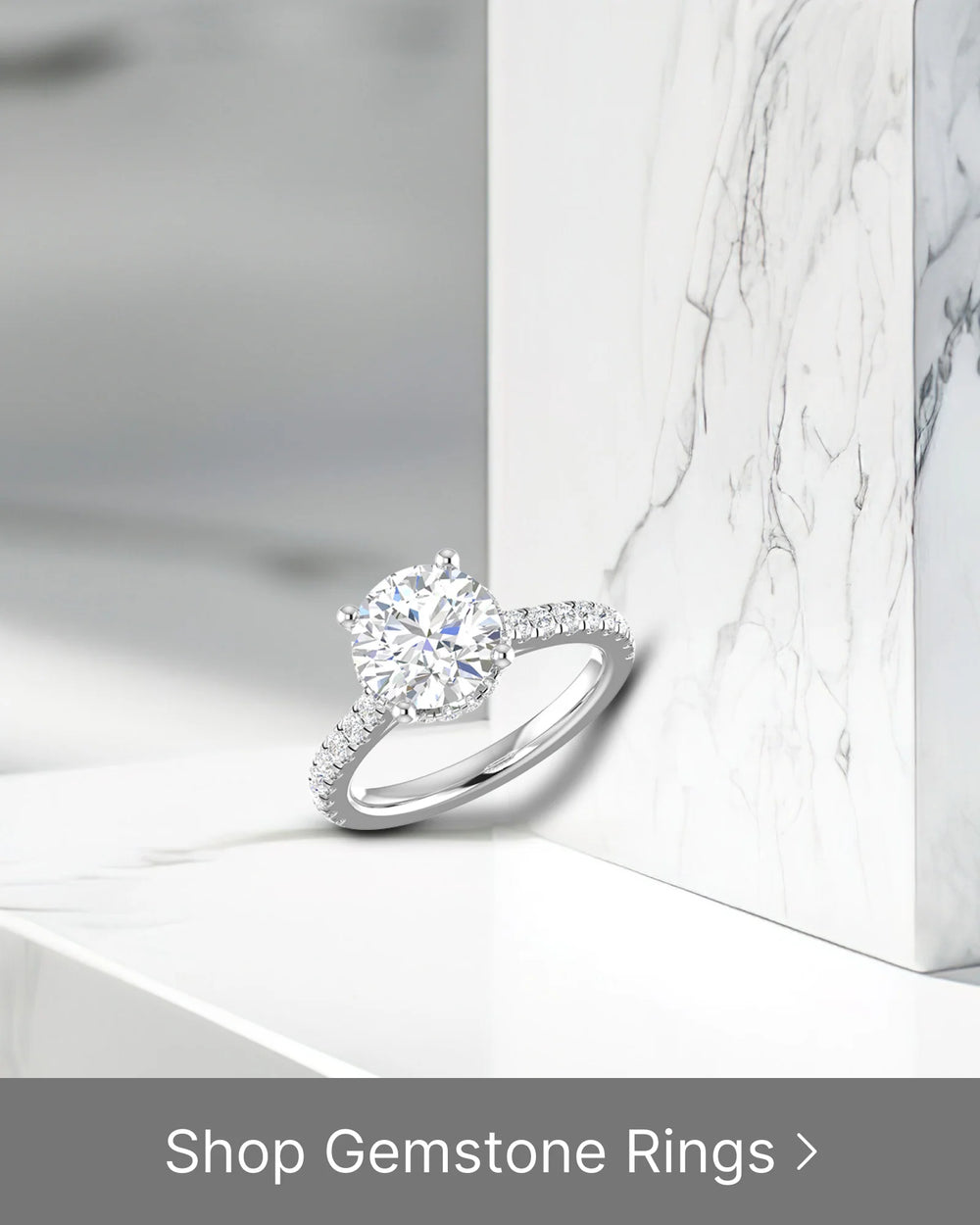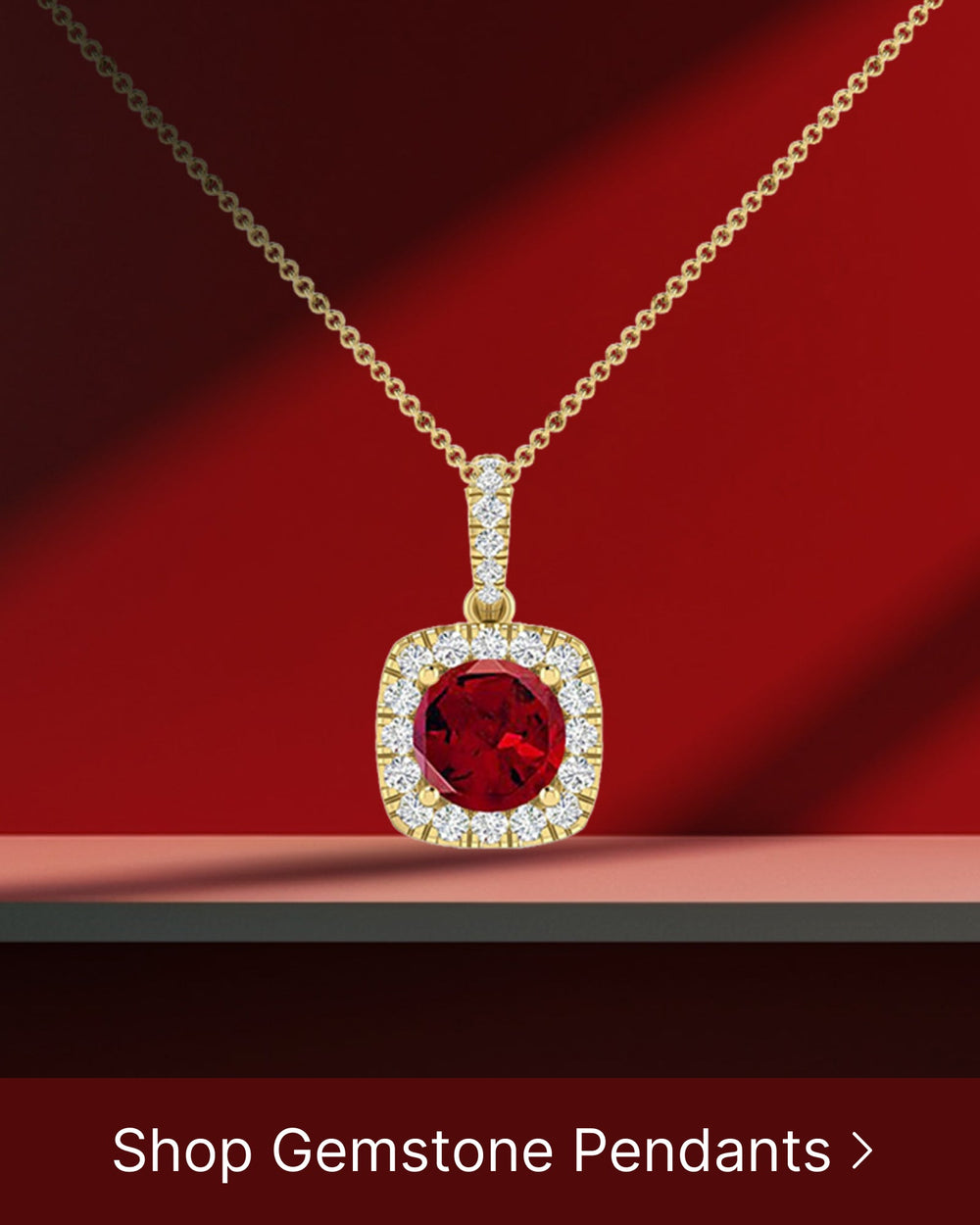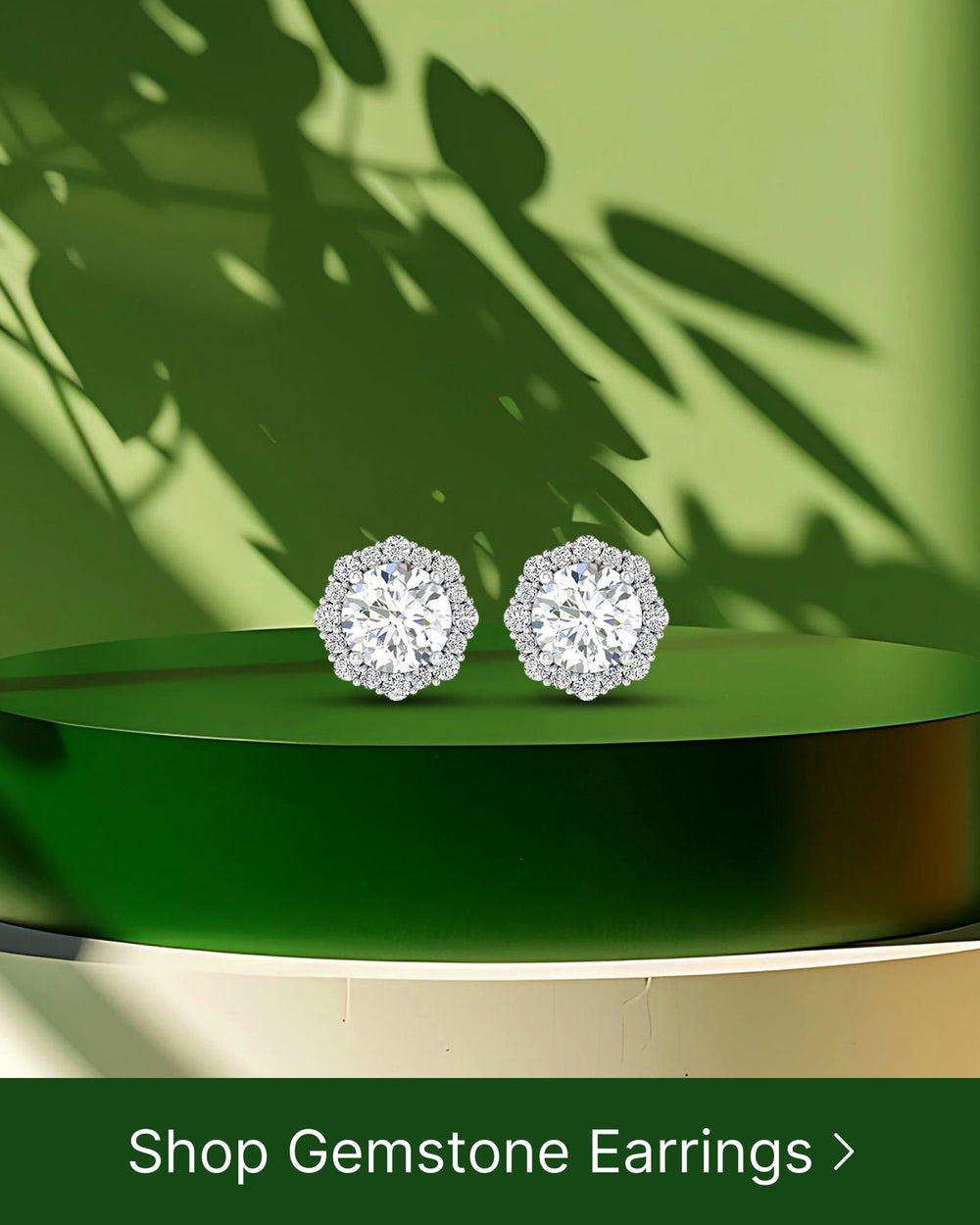Gemstones are known for their beauty and luster, captivating everyone who sets their eyes upon them. However, what sets one gemstone apart from another lies in the intricacies of its cut. The cut of a gemstone plays a vital role in determining its brilliance and sparkle, making it a crucial factor to consider when selecting a gemstone for jewelry. In this article, we delve into the fascinating world of gemstone cuts, exploring the basics, process, popular types, choosing the right cut, and caring for different cuts of gemstones.
The Basics of Gemstone Cuts
A key aspect of understanding gemstone cuts is defining what they actually are. Gemstone cuts refer to the manner in which a gemstone is shaped and faceted to enhance its brilliance and overall aesthetic appeal. A well-cut gemstone allows light to enter and reflect back, radiating its inherent beauty.
When it comes to gemstone cuts, there is a fascinating world of variety and craftsmanship to explore. Each cut has its own unique characteristics and charm, adding to the allure of the gemstone. Let's delve deeper into the different types of gemstone cuts and their significance.
Defining Gemstone Cuts
Gemstone cuts are divided into various categories, each with its distinctive characteristics. The most common cuts include the brilliant cut, step cut, mixed cut, and rose cut. The brilliant cut, for instance, features multiple facets that create a dazzling play of light, while the step cut exhibits a series of rectangular facets that create a staircase-like pattern.
But there's more to gemstone cuts than just these popular options. Other cuts like the emerald cut, princess cut, cushion cut, and marquise cut offer their own unique brilliance and visual appeal. The emerald cut, known for its rectangular shape and beveled corners, showcases the gemstone's clarity and depth. The princess cut, on the other hand, is a square or rectangular cut with brilliant facets that enhance the gemstone's sparkle.
Furthermore, the cushion cut, with its rounded corners and large facets, exudes a vintage charm that adds a touch of elegance to any gemstone. The marquise cut, with its elongated shape and pointed ends, creates a regal and elongating effect on the gemstone, making it a popular choice for engagement rings.
The Importance of Gemstone Cuts
The cut of a gemstone directly impacts its ability to reflect and refract light, affecting its brilliance, fire, and scintillation. A well-cut gemstone can maximize its optical properties, making it appear larger, more vibrant, and captivating to the beholder. In contrast, a poorly cut gemstone may lack sparkle and fail to showcase its true beauty.
When a gemstone is cut with precision and expertise, it allows light to enter and bounce off the facets, creating a mesmerizing display of colors and brilliance. The angles and proportions of the cut determine how light interacts with the gemstone, resulting in its overall visual impact.
It is essential for gemstone cutters to strike a delicate balance between maximizing the gemstone's beauty and retaining as much of its weight as possible. This requires skill, experience, and an eye for detail. A master cutter carefully studies the gemstone's natural properties, such as its crystal structure and color, to determine the best cut that will enhance its inherent beauty.
Moreover, gemstone cuts can also influence the durability and longevity of the gemstone. A poorly cut gemstone may have weak points or improper proportions that make it more susceptible to damage or breakage. On the other hand, a well-cut gemstone is not only visually appealing but also more durable, ensuring that it can withstand the test of time.
So, the next time you admire a stunning gemstone, take a moment to appreciate the intricate artistry and craftsmanship that went into its cut. The cut is not just a technical aspect; it is a testament to the skill and creativity of the gemstone cutter, who transforms a rough stone into a breathtaking work of art.
The Process of Cutting Gemstones
Creating a beautifully cut gemstone is a meticulous process that requires skill, precision, and attention to detail. Let's explore the tools used in cutting gemstones and the steps involved in the cutting process.
When it comes to cutting gemstones, a skilled lapidary is like an artist, using a range of tools to shape and refine these precious stones. These tools include diamond-coated saws, grinding wheels, laps, and polishing compounds. Each tool plays a crucial role in the cutting process, allowing the lapidary to bring out the gemstone's natural beauty.
Firstly, the lapidary uses a diamond-coated saw to carefully cut the rough gemstone into a more manageable shape. This initial cut is crucial as it determines the overall size and shape of the final gemstone. The lapidary must exercise caution and precision to ensure that the cut is clean and accurate.
Once the gemstone has been shaped, the lapidary moves on to the grinding process. Using a grinding wheel, the lapidary carefully removes excess material from the gemstone, refining its shape and preparing it for faceting. This step requires both skill and patience, as the lapidary must ensure that the gemstone is evenly shaped and symmetrical.
Faceting is perhaps the most intricate and time-consuming step in the cutting process. The lapidary uses a variety of grinding wheels and laps to cut precise facets onto the gemstone's surface. Each facet must be carefully calculated and positioned to maximize the gemstone's brilliance and sparkle. This step requires a keen eye for detail and a steady hand.
Finally, after the gemstone has been faceted, it is time for the lapidary to polish it to perfection. Using polishing compounds and a rotating lap, the lapidary carefully buffs the gemstone's surface, removing any scratches or imperfections. This final step is crucial in bringing out the gemstone's true beauty and enhancing its luster.
Throughout the cutting process, the lapidary must exercise patience, precision, and a deep understanding of the gemstone's properties. Each gemstone is unique, and the lapidary's skill lies in revealing its individual brilliance. The result is a stunning, faceted masterpiece that showcases the gemstone's inherent beauty.
Tools Used in Cutting Gemstones
A skilled lapidary utilizes a range of tools to shape and refine gemstones. These tools include diamond-coated saws, grinding wheels, laps, and polishing compounds. The precision of these tools allows for intricate details to be carved into the gemstone, bringing out its natural beauty.
Diamond-coated saws are essential for making the initial cut in the rough gemstone. These saws are equipped with tiny diamond particles that can cut through even the hardest gemstone materials. The lapidary carefully guides the saw, ensuring a clean and precise cut.
Grinding wheels are used to remove excess material from the gemstone, refining its shape and preparing it for faceting. These wheels are available in various grits, allowing the lapidary to gradually shape the gemstone and achieve the desired result. The lapidary must be mindful of the pressure applied to the grinding wheel to prevent damaging the gemstone.
Laps, on the other hand, are used during the faceting process. These flat discs are coated with diamond particles and are used to cut precise facets onto the gemstone's surface. Laps come in different sizes and shapes, allowing the lapidary to create a variety of facet designs and patterns.
Polishing compounds are the final touch in the cutting process. These compounds, usually in the form of powders or pastes, are applied to a rotating lap. The lapidary carefully polishes the gemstone's surface, removing any scratches or imperfections and enhancing its luster. Different polishing compounds are used depending on the type of gemstone being cut.
Steps in Cutting a Gemstone
The cutting process involves a series of steps that transform a rough gemstone into a faceted masterpiece. These steps include shaping the gemstone, grinding away excess material, faceting the stone, and polishing it to perfection. Each step requires precision and expertise to unleash the inherent brilliance of the gemstone.
Shaping the gemstone is the first step in the cutting process. Using a diamond-coated saw, the lapidary carefully cuts the rough gemstone into a more manageable shape. This initial cut determines the overall size and shape of the final gemstone.
After shaping, the lapidary moves on to grinding away excess material. Using a grinding wheel, the lapidary carefully removes any unwanted material, refining the gemstone's shape and preparing it for faceting. This step requires precision and patience to ensure that the gemstone is evenly shaped and symmetrical.
Faceting is the most intricate step in the cutting process. Using a variety of grinding wheels and laps, the lapidary cuts precise facets onto the gemstone's surface. Each facet must be carefully calculated and positioned to maximize the gemstone's brilliance and sparkle.
Finally, the gemstone is polished to perfection. Using polishing compounds and a rotating lap, the lapidary buffs the gemstone's surface, removing any scratches or imperfections. This final step enhances the gemstone's luster and brings out its true beauty.
The cutting process is a labor of love, requiring skill, patience, and a deep appreciation for the beauty of gemstones. Each step is carefully executed to reveal the gemstone's unique brilliance, resulting in a stunning piece of art that will be cherished for generations to come.
Popular Types of Gemstone Cuts
There are numerous gemstone cuts available, each with its own unique appeal. Let's explore some of the popular gemstone cuts that are widely sought after in the jewelry industry.
Round Cut Gemstones
The round cut is the most classic and timeless of all cuts. Its symmetrical shape allows for maximum light reflection, resulting in exceptional brilliance. Round cut gemstones are commonly found in engagement rings and are highly prized for their versatility and timeless elegance.
Princess Cut Gemstones
The princess cut is a square or rectangular cut known for its modern and stylish appearance. Its facets create a brilliant sparkle, making it a popular choice for engagement rings and other jewelry pieces that demand a contemporary look.
Oval Cut Gemstones
The oval cut exudes elegance and sophistication. Its elongated shape creates an illusion of greater size and its faceting enhances the gemstone's brilliance. Oval cut gemstones are often used as center stones in rings, pendants, and earrings.
Choosing the Right Cut for Your Gemstone
Selecting the right cut for your gemstone involves careful consideration of various factors. Let's explore what you should keep in mind when choosing the perfect cut for your precious gemstone.
Factors to Consider When Choosing a Cut
Several factors come into play when selecting a cut, including the gemstone's shape, size, color, and personal preference. Different cuts can emphasize or minimize certain characteristics of a gemstone, so it's important to choose a cut that enhances its natural beauty.
Impact of Cut on Gemstone Value
The cut of a gemstone can significantly affect its value. A well-cut gemstone that maximizes its beauty and brilliance will generally command a higher price. The excellence of the cut can elevate a gemstone's desirability and investment potential.
Caring for Different Cuts of Gemstones
Proper care and maintenance are essential to preserve the beauty and longevity of gemstones. Let's explore some tips on how to care for different cuts of gemstones.
Cleaning and Maintenance Tips for Cut Gemstones
Regular cleaning is important to ensure the brilliance of your gemstones is not obscured by dirt or oils. It's recommended to use a soft brush, mild soap, and warm water to clean your gemstone jewelry. Additionally, storing gemstones separately in a soft cloth pouch can prevent scratches and damage.
Avoiding Damage to Your Cut Gemstones
While gemstones are durable, certain precautions should be taken to avoid damage. Avoid exposing gemstone jewelry to harsh chemicals or extreme temperatures. It's also advisable to remove jewelry when engaging in physical activities or storing them in a safe place when not in use.
In conclusion, understanding the different cuts of gemstones is essential for appreciating their beauty and selecting the perfect gemstone for your jewelry. From the basics of gemstone cuts to the various types available, the impact of cut on gemstone value, and tips for caring for different cuts, this article provides a comprehensive guide to help you navigate the world of gemstone cuts with confidence.






